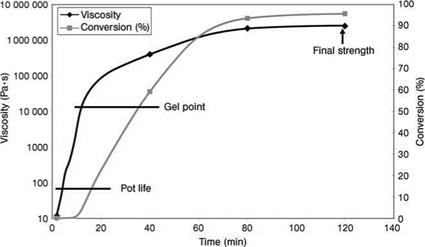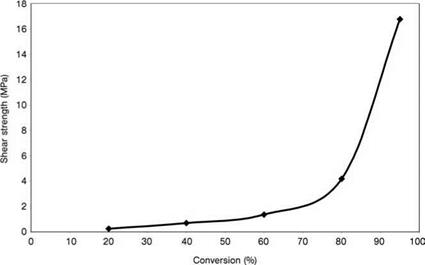Epoxy resin adhesives are characterized by their strength, long-term durability and high resistance to ambient conditions and chemicals. Owing to their excellent
 |
adhesion properties towards metals, mineral surfaces and wood, they have a wide field of applications in adhesive technology.
In the car manufacturing, aircraft and building industries, the adhesives must meet specific requirements depending on their intended use(s). The mechanical loads imposed may be of static or dynamic nature, and may be acting in different directions, for example compressive stress, tensile stress, shear stress or peel stress. Furthermore, the adhesive joints must be able to withstand different ambient conditions caused by temperature, moisture and various chemical influences.
Epoxy resin adhesives are specially formulated to allow their correct processing, handling and storage stability. The curing conditions depend on the formulation: one-part systems which have a good storage stability at room temperature over a prolonged period of time generally require curing temperatures above 150 °C and curing periods of 15-30 min. In contrast, accelerated one-part epoxy adhesives require temperatures of only perhaps 130 °C for 30 min, but they have to be stored at low temperatures.
Curing at room temperature is only achieved with two-part adhesives. According to the formulation, the curing process may take several minutes to several hours. At curing, epoxy resin adhesives pass through different transformation phases before reaching their full strength. The course of the cure — that is, the course of the conversion of the epoxy resin — depends on several factors, including the reactivity of
|
Figure 5.15 Viscosity of a two-part epoxy adhesive, depending on conversion of the epoxy resin. |
the components, time and temperature. Here, one important period is the ‘pot life’, during which the adhesive can be applied and the adherents can be joined. At a curing degree of 50-60%, the adhesive reaches the ‘gelation point’ where it changes from a liquid state into a solid (Figure 5.15). Although the adhesive is in the solid condition when reaching the gelation point, full strength is only obtained at a conversion rate of 90-100% (Figure 5.15).
With advancing conversion of the epoxy resin, there is an increase in the Tg, inner strength, elasticity modulus, and tensile and flexural strengths, respectively. Epoxy resin adhesives with a curing or crosslinking rate greater than 90% almost reach their full strength (Figure 5.16) and full resistance against ambient influences such as moisture and chemicals.
When curing takes place at room temperature, the mechanical properties are generally inferior, and the temperature resistance is lower as compared to one-part epoxy resin adhesives. However, when two-part systems are directly heated, or heated in addition to curing at room temperature (e. g. to 180 °C for 15-30 °min), both their Tg and strength and resistance to moisture and chemicals correspond to those ofone — part epoxy resin adhesive systems.
Present-day, two-part epoxy resin systems have the advantage that they combine very fast curing at relatively low temperatures with a high performance level. For example, their impact resistance, which is relevant for crash resistance (e. g. in car manufacture), is as high as that of one-part epoxy resin adhesives. This provides for innovative and optimized manufacture processes in structural bonding, particularly in the car manufacturing industry. As an example, immediately after application of the adhesive and joining of the adherents, a green strength of 2-4 MPa can be built up within 40-60 s by inductive heating of the adherents to 120-140 °C. This provides for stable and distortion-free assemblies shortly after joining, and also avoids problems with tolerances in bodywork construction. The components may be heated either
|
Figure 5.16 Shear strength of a two-part epoxy adhesive, depending on conversion of the epoxy resin. |
partially or all over the surface. Two-part epoxy resins reach the gelation point very early and by that time have already built up a high green strength. Moreover, the reaction then advances even without further heating. If during car manufacture, for example in the e-coat stove (170 °C), the component is re-heated, the modulus decreases but no viscous flow phase occurs, as would be the case for one-part epoxy systems (Figure 5.17).
In order to cure one-part epoxy adhesives, heat or energy in the form of radiation is required, with common curing temperatures ranging between 120 and 180 ° C, with curing periods of 10-30 min. One-part adhesives undergo a low-viscosity phase, followed by a rapid curing process. Flow at room temperature is prevented by the application of high-viscosity adhesive pastes at elevated temperatures (60-80 °C). Additionally, the adhesives are often pregelated at 120-140 °C to obtain a certain green strength.
 9 сентября, 2015
9 сентября, 2015  Pokraskin
Pokraskin 

 Опубликовано в рубрике
Опубликовано в рубрике 